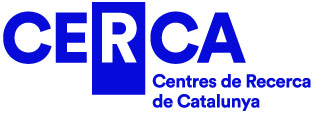Agencia Estatal de Investigación (AEI), Ramón y Cajal (junior) (RYC2021-034621-I)
Transhumance, the seasonal movement of livestock between summer and winter pastures, has had a fundamental function both in the formation and management of Mediterranean rural landscapes and in the definition of food production and raw materials for manufacturing (eg. wool, skins etc.). Such pastoral activity also represented a crucial moment of exchange and circulation of knowledge and practices at the local, regional and supra-regional level, thus contributing to the formation of complex social and cultural relationships. Yet, only fragmented traces remain of this millenary practice which risk being forgotten in the decades-long process of mountain landscape abandonment. Recently (2019) transhumance has become an UNESCO Intangible Cultural Heritage: a recognition that invests cultural knowledge and practices through the promotion of festivals, educational activities etc. However, there is a material heritage that deserves to be identified, interpreted and valued: it is a heritage made up of historical, archaeological and environmental traces that can be studied through an interdisciplinary and diachronic approach.
The general objective of this project is to bring to light the rich environmental and cultural heritage linked to transhumant pastoralism, highlighting how this practice has built and transformed the rural landscape and its living components (ecology). Indeed, transhumance has represented one of the main environmental factors and has profoundly transformed the ecology of environmental systems in the Mediterranean area: from plant to animal populations, up to the physico-chemical properties and structural characteristics of the soils. The effects of transhumant breeding are identifiable through the study of bio-stratigraphic markers (e.g. macro-micro charcoal, pollen, phytoliths, soil chemical elements, microorganisms etc.) extracted from mountain soils and sediments. In this project tools provided by anthracology, pedoanthracology, dendro-anthracology and carpology will be particularly enhanced; Bio-stratigraphic evidence will be cross-checked with other archaeological, historical, ethnographic sources (archaeological remains, radiocarbon, archival texts and maps, interviews to local people etc.) and historical ecology observations to build a solid interdisciplinary project. The project focuses on two study areas that represent two of the most important hubs of the transhumance system of the western Mediterranean region: the Eastern Pyrenees (Catalonia – Spain) and the Maritime Alps (Liguria – Italy).
While the archaeological traces of transhumance activity gradually disappear the environmental effects deriving from the abandonment of this ecosystem management practice are increasingly evident: a decrease in biodiversity, an increase in hydro-geological and fire risk are just some of the most evident consequences. The research proposed here underlines the need to intervene in support of the persistence of these seasonal pastoral practices through new policies for the management of mountain areas that today are highly marginalized.





